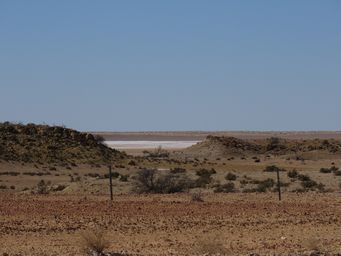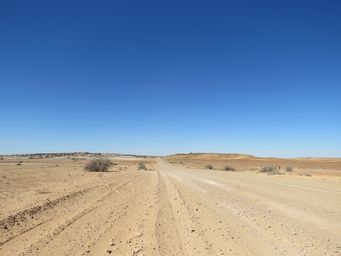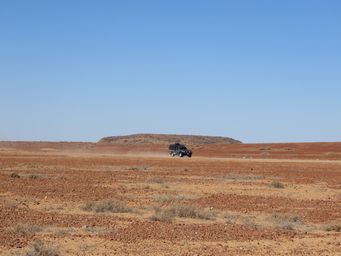Australia So Much to See
The Oodnadatta Track - William Creek to Marree
While the full Oodnadatta track runs from Marla on the Stuart Highway east to Oodnadatta, and southwards to Marree, after our change of plans we only joined it a few kilometres north of William Creek.
From William Creek, we followed the Oodnadatta Track
southwards from William Creek. The road was in good condition. It is stony in places, so if towing, ensure your trailer
is well protected underneath, and as with all long unsealed roads, keep tyre pressures and speeds down.
Beresford Siding is on the east side of the Oodnadatta Track, fifty kilometres south of William Creek. There are several tracks
in, and the middle on was the most suitable. Being well back from the track and with heaps of room, this is also a popular overnight
stop.
The old Station Masterís building consisted of three adjoining living quarters. There was a fire place in each of
the living rooms and bedrooms.
Water was drawn from an Artesian bore, and the tower next to the overhead railway tank was a Kennicott water softener, to treat mineralised
bore water and prevent lime and gypsum building up in train engines. This was made redundant when the diesel trains took over from
steam in 1954. The bore has been capped, and said to be preserved in working order, however it appeared to be sealed to me.
It also no longer had poly pipe attached to it, which may explain the dry dams (see below).

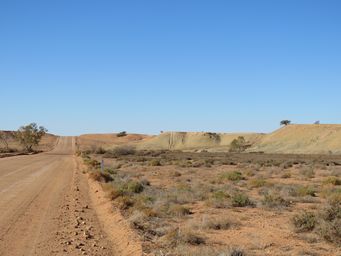
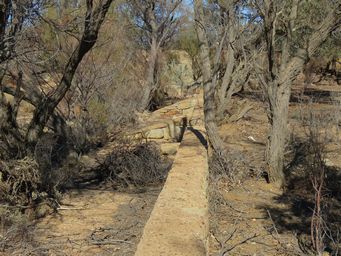
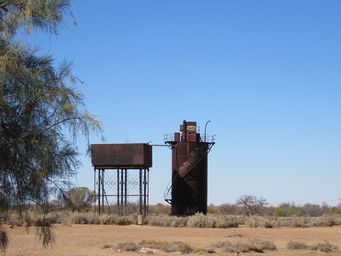
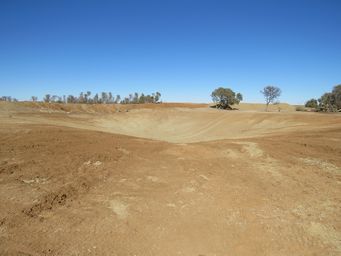
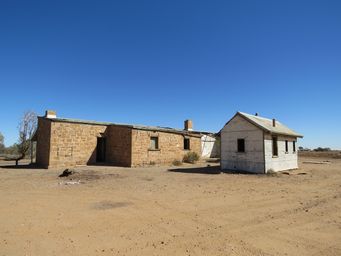
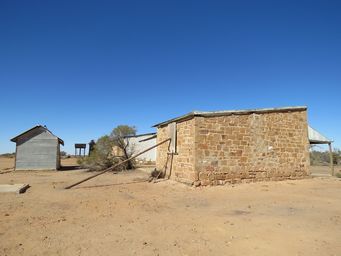
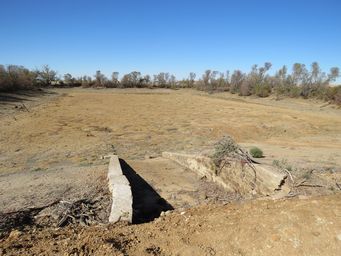
This hill is the remnants of a now extinct mound spring (above left). On the west side of this hill is a historical site which has equipment used to guide and track rockets launched by the Woomera facility.
The track can be quite stony (above right).
The Strangways historic site is next along the way, on the west side of the track. We missed the turn-off which is 37 kilometres
south of William Creek, and I regret we didnít turn back. Strangways was named by Explorer Peter Egerton-Warburton in 1858 named
after Henry Bull Templar Strangways, a South Australian political figure of the day. There is a Memorial to Peter Egerton-Warburton along
the Stuart Highway.
Strangways was the site of the first homestead on the pastoral property of Strangways, which is now Anna
Creek Station. There are significant ruins at Strangways, including a brick buttressed water storage tank. The site was
chosen for the homestead due to the presence of water in a mound spring. There is still water in the spring, but it has stopped
flowing, due to a depletion of water in the Great Artesian Basin. There are thousands of mound springs around the Great Artesian
Basin. Several walks include one to where wool was once scoured using the Artesian Water from the springs.
Strangways
was sold to the South Australian government in 1870, and became a repeater station on the Overland Telegraph Line until 1896, when
the repeater was transferred to William Creek. Being several kilometres from the Oodnadatta Track, this is a popular camping
spot, as are the old railways sidings closer to the track.
We glimpsed a saltpan between some hills. This may have been formed from run-off from mound springs.
There are thousands
of mound springs on the perimeters of the Great Artesian Basin.
Resources
Club 4x4 Oodndatta Track Guide
Environment SA Oodnadatta Track Heritage Survey (.pdf)
